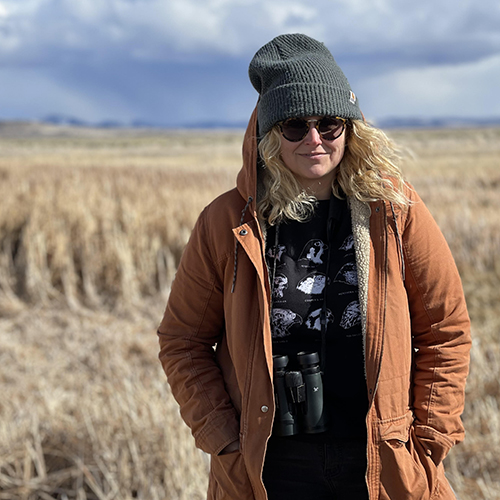How To: Photograph Wildlife in the Desert
Author: Tara Lemezis | Published Date: April 14, 2025 | Category: How-To This article was originally published in The Source Weekly on April 9, 2025. A guide to thoughtful […]
Read MoreTara Lemezis Website
In a great wildlife photo, place is just as important as the subject. Including the landscape adds depth, context and emotion to your images. Stray from the “bird in a box” approach, where the subject is isolated against a blank background. Instead, let the land breathe life into your frame. Show the interplay between rock, sky and sage. Use leading lines and natural perches to create balance and interest.
Lighting can make or break a photo. The high desert has moods that shift throughout the day — soft pastels at dawn, crisp midday shadows and golden evening light that sets the land ablaze; shoot in all of them. Blue hour, just before sunrise or after sunset, and golden hour, just after sunrise and before sunset, are often a photographer’s sweet spot. Generally, midday light is considered too harsh to yield a pleasing photo, but sometimes, when the conditions are right, epic clouds in those big skies or an approaching storm can really bring the drama to your image!
Each season unveils its own uniqueness. In autumn, Steens Mountain is awash in vibrant oranges and yellows as the aspen changes color. Winter brings a snowy stillness, waterfowl and large flocks of snow geese. Late spring is always an ideal time to explore, when migratory species like western tanager and Bullock’s oriole color the scenery. And the high desert in summer holds its own magic — burrowing owls are aplenty, common nighthawks loaf on fence posts until just after golden hour before performing their nightly aerial displays, wildflowers are showy and the way the lingering summer light fires up the entire landscape makes for vivid and remarkable images.
Wildlife photography in eastern Oregon’s high desert is as much about connection as it is about skill. Respect the land, learn its rhythms and let the wild come to you. Your patience will be rewarded with photographs that tell the story of this truly extraordinary place.
Looking to share the stories you capture behind your lens? Each year, Oregon Natural Desert Association’s Wild Desert Calendar features a dozen inspiring landscape and wildlife shots showcasing the beauty of the high desert through the seasons. Consider submitting photos for a chance to see your own image in the calendar and to support Oregon high desert conservation. The submission period for the 2026 calendar is now open through Friday, June 6.

Tara Lemezis (she/her) is a wildlife photographer based in Portland. She’s been photographing birds (and mammals, wildflowers and amphibians and reptiles) and kicking up dust in Oregon’s high desert since 2013. She’s drawn to this ecoregion for many reasons: the geologic wonder that is Steens Mountain, the seemingly endless sagebrush steppe, the Alvord Desert playa, stargazing into the darkest night skies you’ve ever seen, solitude, and the swaths of protected and public land along the Pacific Flyway, where over 320 bird species spend some part of their life cycle.
Check Out Tara's WorkCalling all photographers! Use your creativity and talent to support conservation. Submit your best shots of Oregon’s high desert for a chance to have your photos featured in our iconic […]
Read MoreAuthor: Lace Thornberg | Published: March 9, 2018 | Updated: May 5, 2022 | Categories: How-to Five landscape photographers share their advice: knowledge, persistence, patience The arid landscape that covers […]
Read MoreAuthor: Tara Lemezis | Published Date: April 14, 2025 | Category: How-To This article was originally published in The Source Weekly on April 9, 2025. A guide to thoughtful […]
Read More